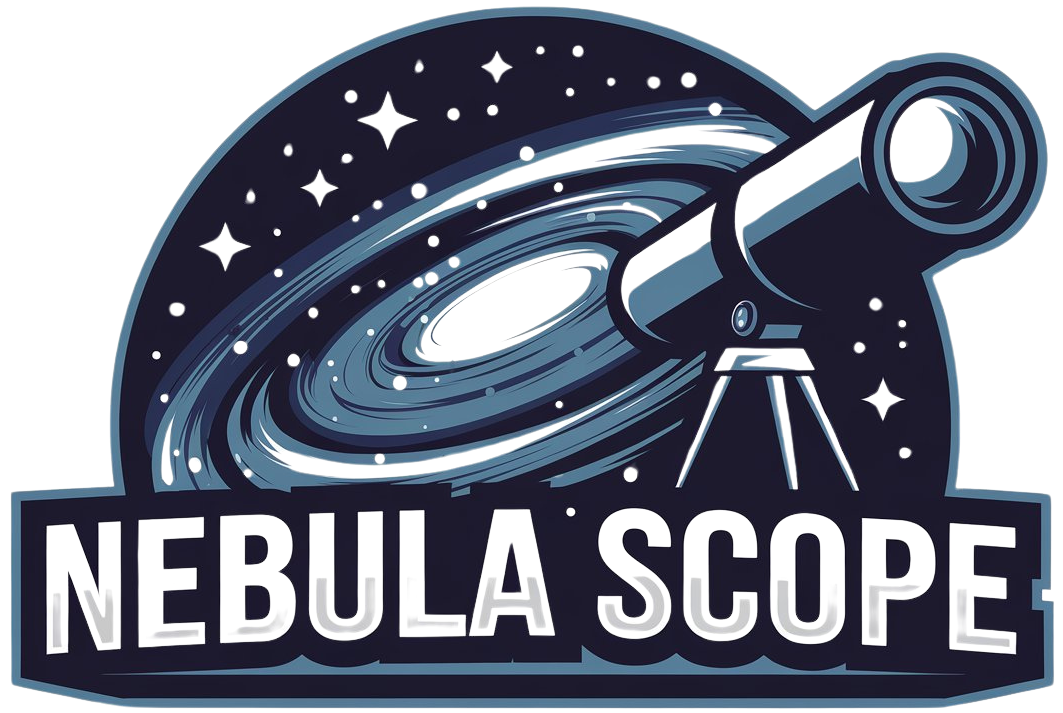The southern Milky Manner arches over the stone and steel sculptures of the Observatorio Cerro Mayu close to L. a. Serena, Chile. Credit score: M. Dieterich (@MattDieterichPhotography) (ACEAP/NSF)
Chile is house to SOME of the sector’s best possible skies — and probably the most international’s maximum complicated tools to watch them. From the radio telescope array charting advanced chemistry in Titan’s environment to the telescopes that pinpointed the neutron superstar merger closing 12 months, Chilean observatories play a starring function in these days’s groundbreaking discoveries.
Many of those world-class amenities are partly or absolutely funded through the US. Public enthusiasm and appreciation underpin a hit tasks corresponding to those, making sure the improve essential for long run enlargement and proceeding clinical discovery. Despite the fact that astronomy excites many American citizens, maximum are ignorant of the really extensive investments made through the US and Chile — in combination — in pursuit of working out our universe.
The Astronomy in Chile Educator Ambassadors Program (ACEAP) objectives to modify that. Now in its fourth 12 months, ACEAP brings American astronomy educators to Chile to reveal firsthand how astronomical amenities serve as, how they make their knowledge and discoveries available to the general public, and the way astronomy and science receive advantages communities on a neighborhood and international scale. This system represents the collaborative efforts of Related Universities Inc. (AUI), the Affiliation of Universities for Analysis in Astronomy, the Nationwide Radio Astronomy Observatory (NRAO), the Nationwide Optical Astronomy Observatory, and Gemini Observatory. ACEAP is supported through the U.S. Nationwide Science Basis (NSF).
Individuals pass at the back of the scenes at probably the most international’s premier astronomical observatories. This wonderful alternative comes with the duty to go back house and unfold what they’ve discovered all the way through their communities.
Knowledgeable messengers
ACEAP gathers folks from around the U.S. and transforms them into a bunch of knowledgeable communicators and advocates for astronomy, with a focal point at the clinical partnership between the US and Chile. Every 12 months, this system selects 9 ambassadors, and the ACEAP group — and circle of relatives — grows. Previous ambassadors stay energetic in this system, making a basis of improve and sharing sources with each and every different and long run ambassadors.
Despite the fact that the vacation spot is at all times the similar, ACEAP differs each and every 12 months as a result of each and every workforce of ambassadors is exclusive. “Every group that comes to Chile as part of this program takes away something different. But, to a person, there is the same infectious enthusiasm to share their experiences with as many people as possible,” says Charles Blue, NRAO’s public data officer and co-principal investigator of this system.
I traveled to Chile in 2017 as ACEAP’s first media liaison. The opposite ambassadors have been planetarium administrators, astrophotographers, academics, and analysis assistants. One was once a Chilean educator main Ok-12 astronomy schooling in her faculty. Many individuals of the various workforce have their fingers in a couple of tasks: spearheading efforts to maintain darkish skies, offering the general public with pop-up telescope viewing, and main native astronomy golf equipment and occasions.
First steps
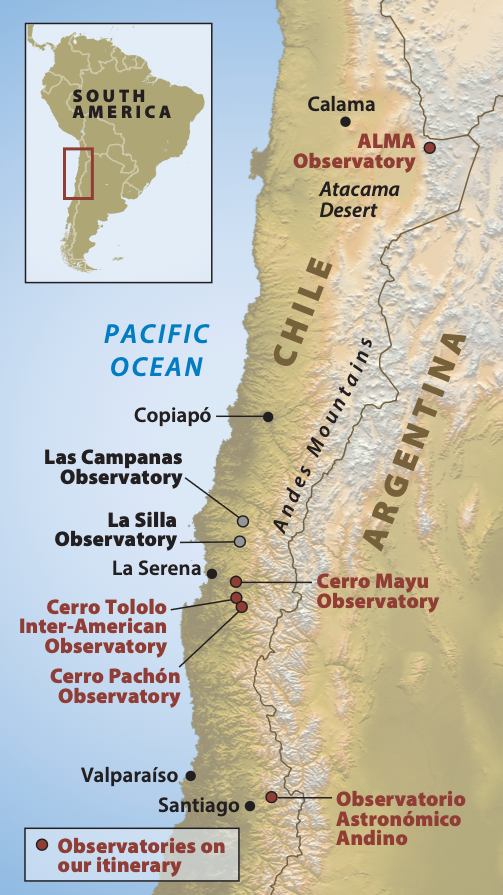 This map displays the places of the observatories on our packed itinerary. Credit score: Astronomy: Roen Kelly
This map displays the places of the observatories on our packed itinerary. Credit score: Astronomy: Roen Kelly
Our nine-day program formally started June 18, 2017, in Chile’s capital, Santiago. Every day was once packed, generally starting at 7 or 8 a.m. and wrapping up in meal time round 8 p.m. (Consuming past due is not unusual in Chile.) We took 3 flights and a number of other lengthy automobile journeys to achieve no longer simplest the observatories, but additionally close by cities and distinctive landscapes in contrast to any I’d noticed sooner than.
We visited Cerro Tololo Inter-American Observatory (CTIO), the Gemini South Observatory, and the Atacama Huge Millimeter/submillimeter Array (ALMA). We additionally stopped at Observatorio Astronómico Andino (OAA) close to Santiago and Observatorio Cerro Mayu close to L. a. Serena — two observatories which are a part of a rising astronomical tourism trade catering to those who wish to commute to and inside Chile to revel in the impressive skies.
Simply outdoor OAA’s rustic however high-tech resort, many people were given our first have a look at the Southern Hemisphere evening sky. Globular cluster Omega Centauri and the Carina Nebula have been shocking thru telescopes, whilst Alpha and Beta Centauri, at the side of close by Crux the Southern Go, stood out brightly to the bare eye amid the wealthy southern Milky Manner. Some acquainted constellations remained — Scorpius, for instance — however seemed oddly misshapen, backward and the other way up from their Northern Hemisphere apparitions.
“What I’ll always remember is the feeling of seeing the Southern Hemisphere stars and not knowing what the heck I was looking at,” says ambassador Amy Jackson, an educator from Austin, Texas, and founder and director of Starry Sky Austin. “For someone who knows the constellations and sky so well, to look up and feel lost is the most disorienting feeling. It really helped me to understand how the students and public I teach in my classes and programs must feel.”
The Observatorio Cerro Mayu marries Chilean tradition with the pretty darkish sky. Cerro Mayu’s massive out of doors sculptures elevate each astronomical and cultural importance, highlighting Chileans’ deep courting with their sky. Despite the fact that we have been blown away at OAA the evening sooner than, the elements was once higher and the sky even darker at Cerro Mayu, prompting a night of excited astroimaging.
International-class observatories
We spent two nights at CTIO, traveling the observatory through day and forgoing sleep to stargaze at evening. ACEAP encourages ambassadors to report their go back and forth each step of the best way; we crammed a lot of our scheduled “downtime” with symbol processing, running a blog, or posting on social media. Some spoke with scholars again house by way of webcam. The skilled astroimagers generously shared pointers — or even apparatus — with the ones people new to night-sky pictures.
We toured the 4m Víctor M. Blanco Telescope and the Yale 1m telescope, a part of the multinational Small and Average Aperture Analysis Telescope Device.
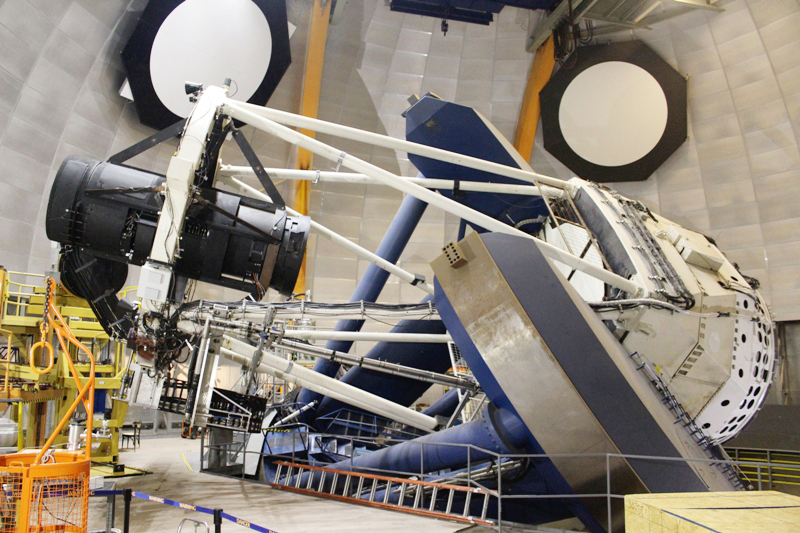 The 4m Víctor M. Blanco Telescope at CTIO is a part of the Darkish Power Survey; the black cylindrical Darkish Power Digital camera sits rather than a secondary reflect. This telescope was once a few of the first to watch the optical afterglow of the neutron superstar merger August 17, 2017. Credit score: E. Ting (ACEAP/NSF)
The 4m Víctor M. Blanco Telescope at CTIO is a part of the Darkish Power Survey; the black cylindrical Darkish Power Digital camera sits rather than a secondary reflect. This telescope was once a few of the first to watch the optical afterglow of the neutron superstar merger August 17, 2017. Credit score: E. Ting (ACEAP/NSF)
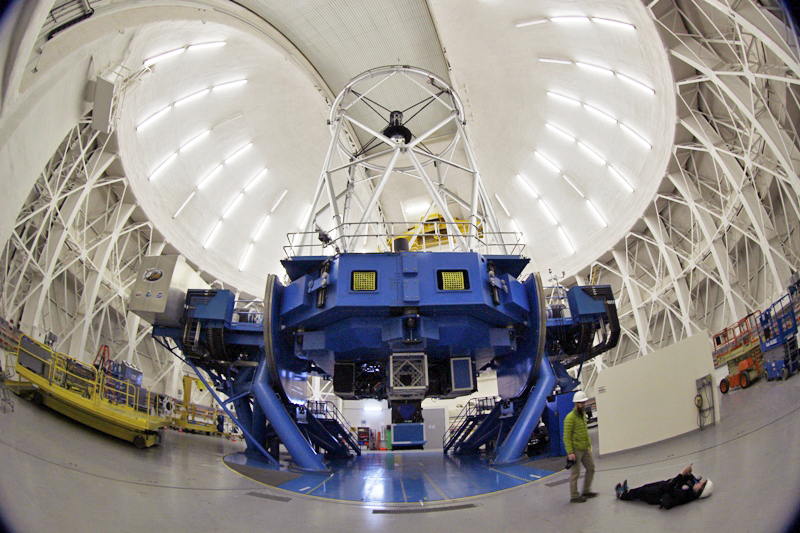 Two ambassadors line up the very best shot within the dome of the 8.1m Gemini South Telescope — an area so massive {that a} fisheye lens works best possible for shooting all of the telescope. The cameras and tools noticed on the backside of the pier are more or less the dimensions of fridges. Credit score: E. Ting (ACEAP/NSF)
Two ambassadors line up the very best shot within the dome of the 8.1m Gemini South Telescope — an area so massive {that a} fisheye lens works best possible for shooting all of the telescope. The cameras and tools noticed on the backside of the pier are more or less the dimensions of fridges. Credit score: E. Ting (ACEAP/NSF)
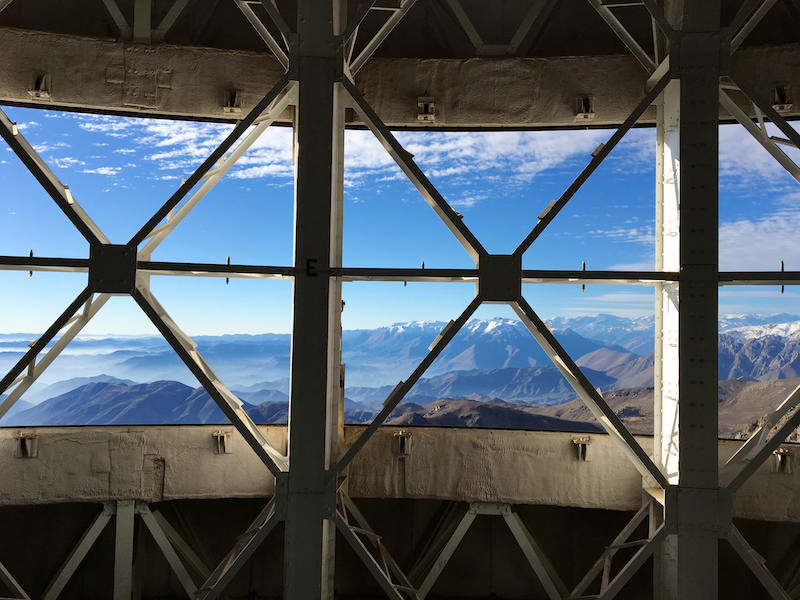 The design of the Gemini South Telescope dome comprises 33-foot-wide (10 m) vents to permit airflow and keep an eye on the temperature within the dome for higher symbol high quality. Those vents additionally supply a surprising view of the encompassing mountains all over the day. Credit score: Alison Klesman (ACEAP/NSF)
The design of the Gemini South Telescope dome comprises 33-foot-wide (10 m) vents to permit airflow and keep an eye on the temperature within the dome for higher symbol high quality. Those vents additionally supply a surprising view of the encompassing mountains all over the day. Credit score: Alison Klesman (ACEAP/NSF)
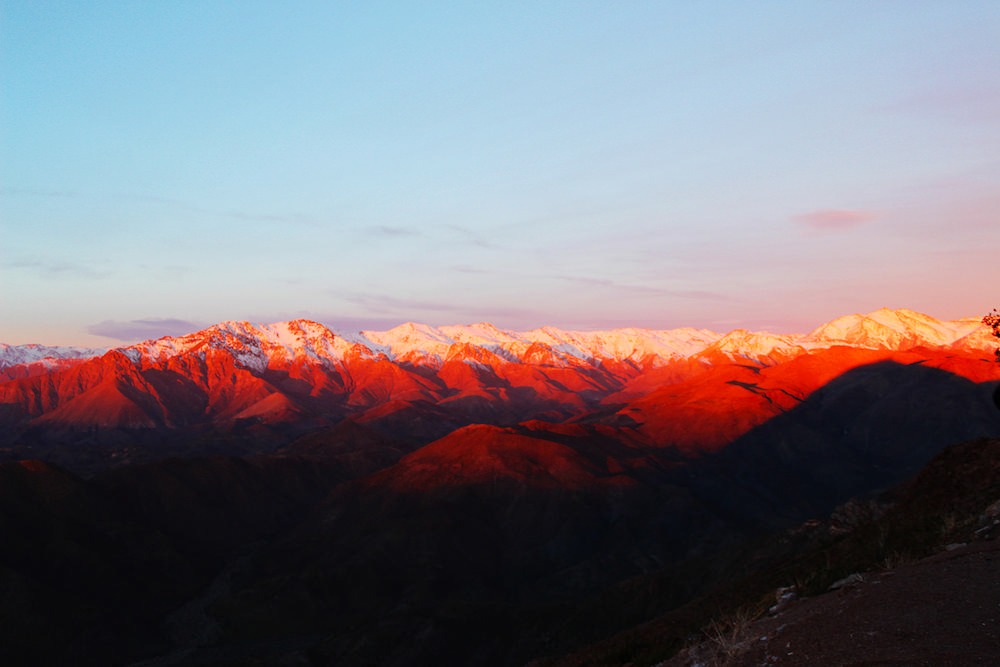 A surprising sundown seen from CTIO paints the mountaintops purple and purple. Credit score: E. Ting (ACEAP/NSF)
A surprising sundown seen from CTIO paints the mountaintops purple and purple. Credit score: E. Ting (ACEAP/NSF)
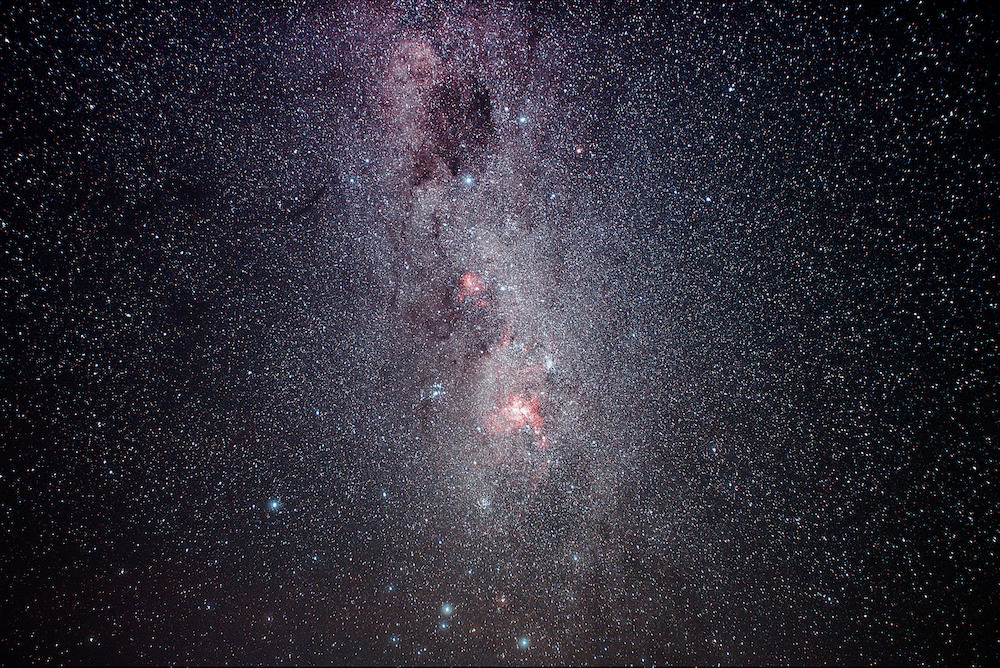 The darkish Coalsack and vibrant Carina Nebula stand out in opposition to the Milky Manner’s diffuse background. The photographer captured this scene from a farmer’s box close to San Pedro de Atacama. Credit score: E. Ting (ACEAP/NSF)
The darkish Coalsack and vibrant Carina Nebula stand out in opposition to the Milky Manner’s diffuse background. The photographer captured this scene from a farmer’s box close to San Pedro de Atacama. Credit score: E. Ting (ACEAP/NSF)
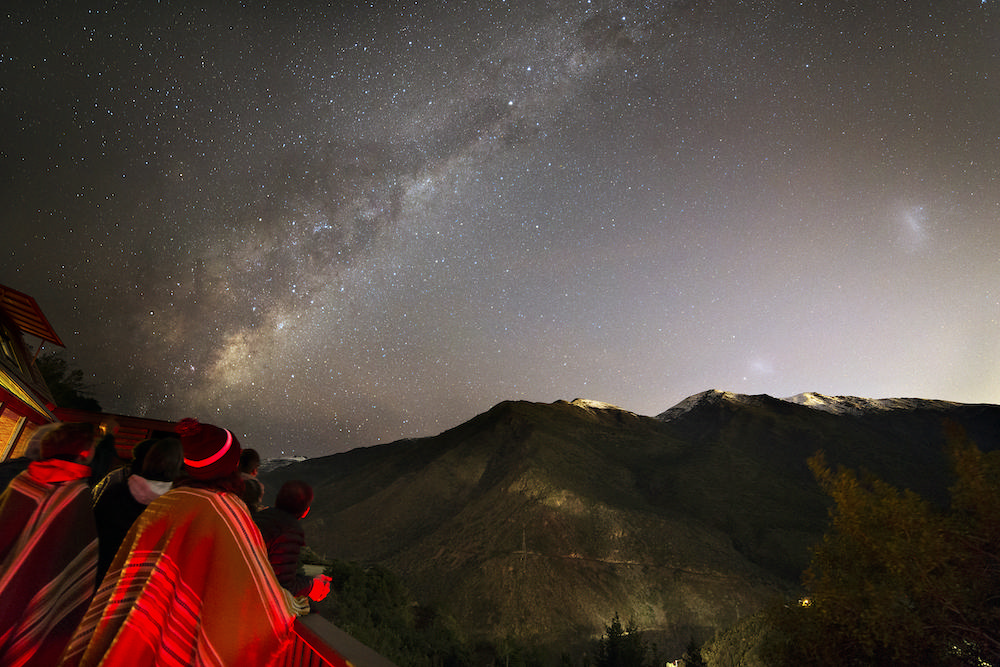 ACEAP ambassadors get their first glimpse of the Southern Hemisphere sky from the Observatorio Astronómico Andino close to Santiago. Credit score: D. Demeter (ACEAP/NSF)
ACEAP ambassadors get their first glimpse of the Southern Hemisphere sky from the Observatorio Astronómico Andino close to Santiago. Credit score: D. Demeter (ACEAP/NSF)
Our seek advice from additionally took us to close by Cerro Pachón, the place the 4.1m Southern Astrophysical Analysis Telescope and the 8.1m Gemini South Telescope live at the side of the development website online for the Huge Synoptic Survey Telescope. We climbed the stairs along the towering Gemini Telescope to peer its silvered number one reflect up shut, and craned our heads again as telescope operators opened the dome and moved the telescope, all of the dizzying procedure easy and just about silent.
Within the Atacama Barren region, we visited native colleges in San Pedro and Toconao with two 2016 ambassadors who’d returned to Chile for outreach. We noticed science categories and gave are living demonstrations on subjects corresponding to infrared gentle and secure sun viewing. (Chile lies within the trail of totality for the July 2, 2019, sun eclipse.) We passed out eclipse glasses, maps of the Moon, and photosensitive beads to number one and highschool scholars.
Our seek advice from to ALMA started on the Operations Reinforce Facility (OSF) at 9,500 ft (2,900 m) in elevation. It comprises team of workers workplaces, labs, and the telescope keep an eye on room the place astronomers practice. In a single lab, we noticed a number of of ALMA’s front-end receivers, which digitize and enlarge alerts won through the dishes.
Most people can seek advice from the OSF, however few other folks — astronomers integrated — seek advice from ALMA’s Array Operations Website (AOS) 17 miles (28 kilometers) away, the place the antennas sit down at the Chajnantor Plateau 16,500 ft (5,000 m) above sea stage. We have been invited to seek advice from the AOS, equipped we handed a compulsory bodily and noticed a two-hour cut-off date. Touring to excessive altitude raises each middle charge and blood power, so our vitals have been checked that morning. We have been all cleared for the go back and forth.
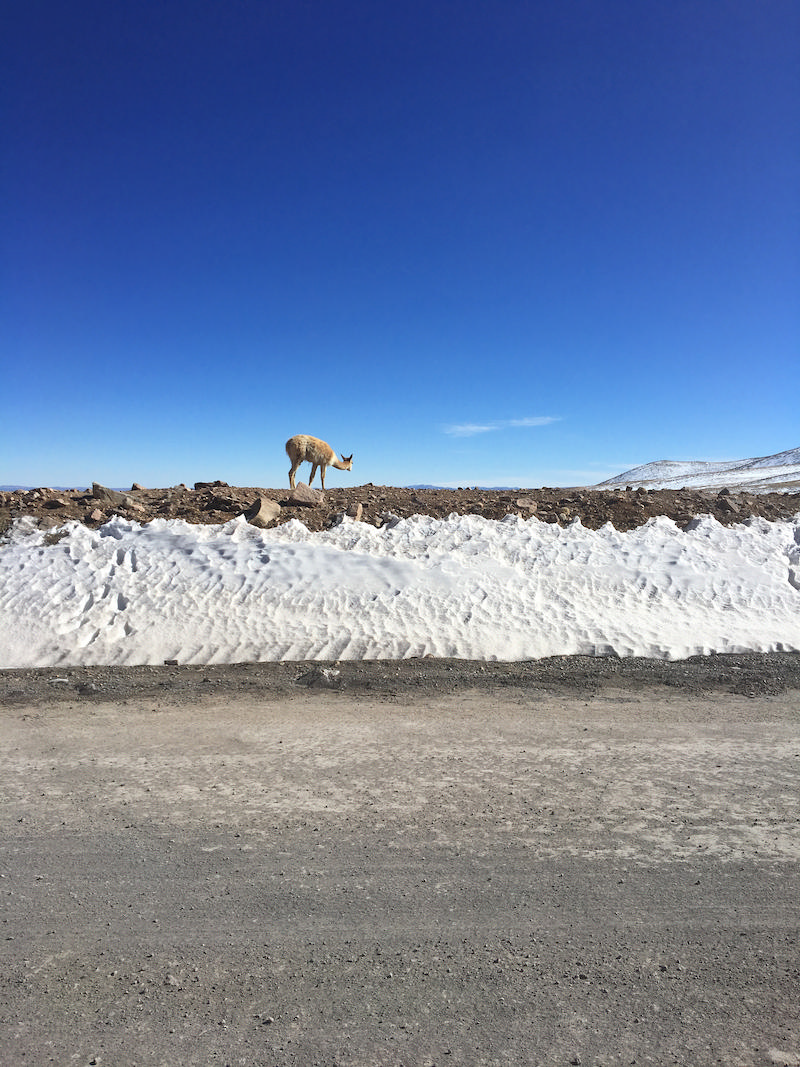 At the power to ALMA’s Array Operations Website at just about 16,500 ft (5,000 m), we noticed a number of vicuñas. Those family of the llama don’t thoughts the excessive altitude. Credit score: Alison Klesman (ACEAP/NSF)
At the power to ALMA’s Array Operations Website at just about 16,500 ft (5,000 m), we noticed a number of vicuñas. Those family of the llama don’t thoughts the excessive altitude. Credit score: Alison Klesman (ACEAP/NSF)
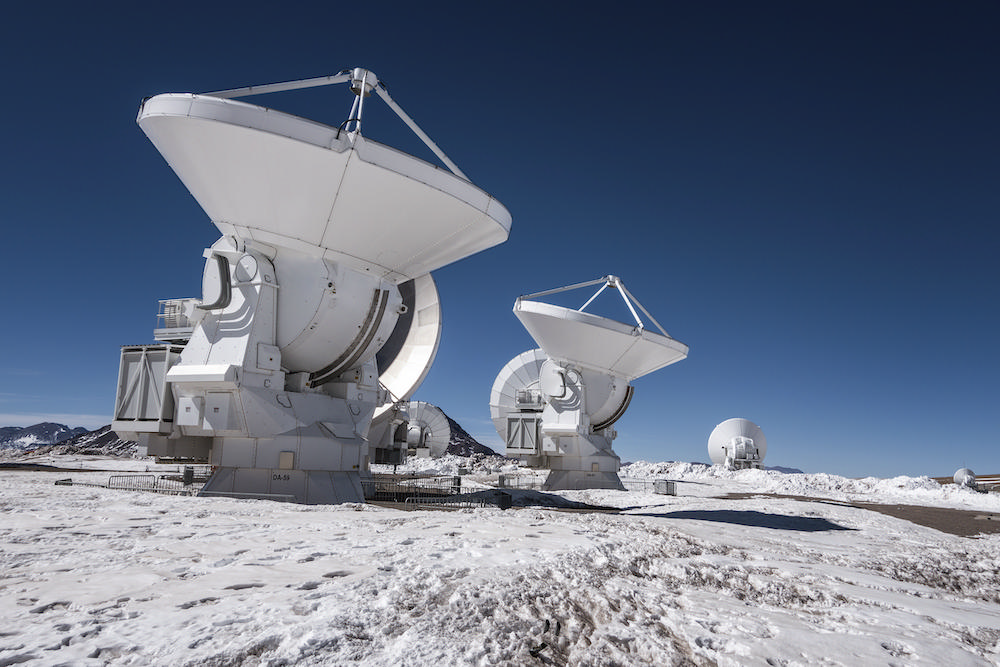 ALMA’s 100-ton antennas stand scattered in opposition to the deep blue sky. This backdrop is simplest visual on the excessive altitude essential to make sure best possible staring at stipulations at millimeter and submillimeter wavelengths. Credit score: M. Dieterich (@MattDieterichPhotography) (ACEAP/NSF)
ALMA’s 100-ton antennas stand scattered in opposition to the deep blue sky. This backdrop is simplest visual on the excessive altitude essential to make sure best possible staring at stipulations at millimeter and submillimeter wavelengths. Credit score: M. Dieterich (@MattDieterichPhotography) (ACEAP/NSF)
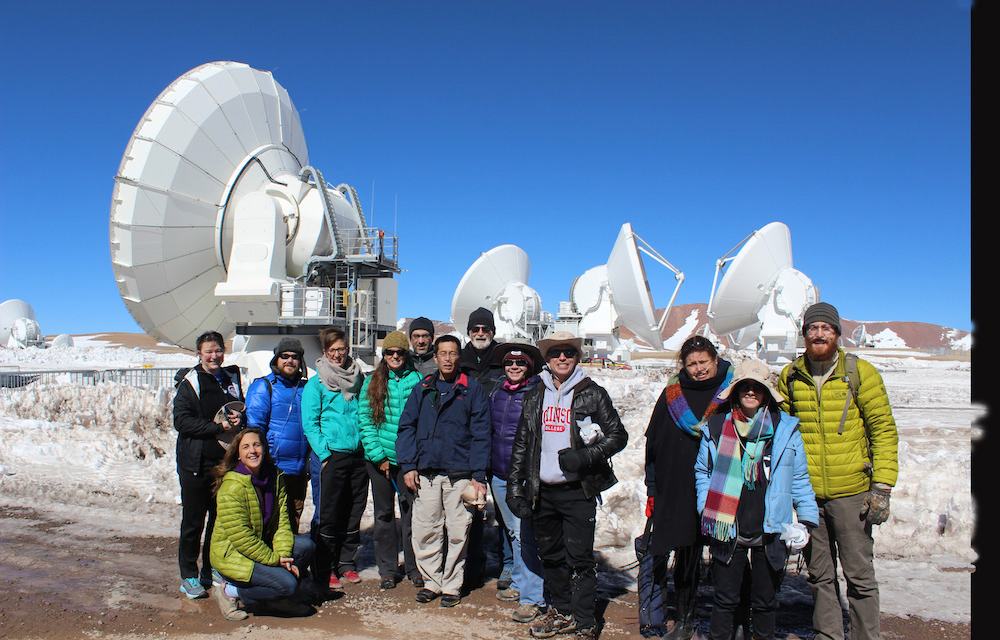 Simply sooner than descending from Chajnantor, our workforce stopped for a photograph, entire with non-public oxygen provides. Credit score: E. Ting (ACEAP/NSF)
Simply sooner than descending from Chajnantor, our workforce stopped for a photograph, entire with non-public oxygen provides. Credit score: E. Ting (ACEAP/NSF)
The day was once transparent and crisp with a deep blue sky, and the often-windy plateau was once slightly calm with scattered piles of crystalline snow and spiky fields of ice. Every people carried an oxygen tank; at that altitude, the ambience comprises simplest about 55 % of the oxygen it does at sea stage. First, we toured the AOS Technical Development, the sector’s second-highest development, which homes the correlator supercomputer. Able to acting 17 trillion calculations in line with moment, it combines alerts from the observatory’s 66 radio dishes, letting them paintings as a unmarried telescope.
Subsequent, we drove out to stroll a few of the 100-ton antennas, some rotating — abruptly and silently like their optical opposite numbers — in trying out mode. We marveled on the engineering, ingenuity, and perseverance required to construct and perform a telescope array in such an excessive surroundings.
Astronomical neighborhood
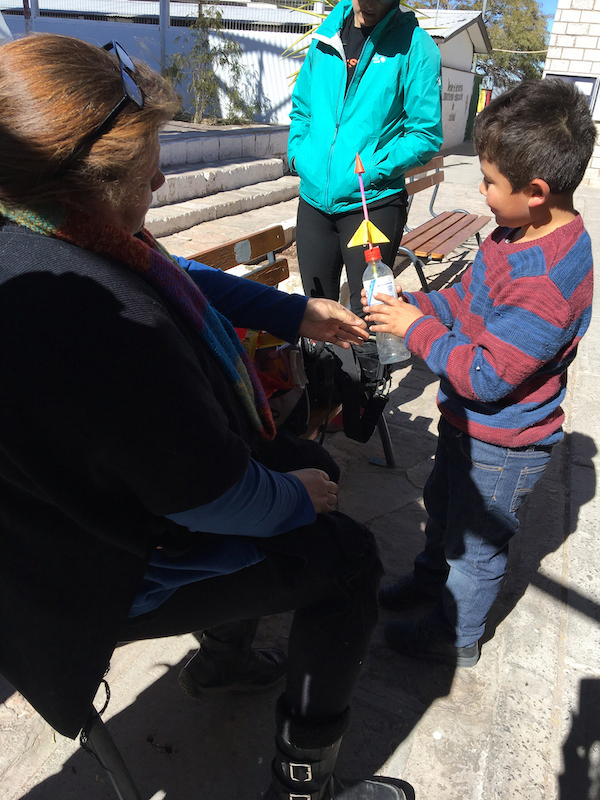 On the Toconao faculty close to ALMA, the ambassadors engaged in a morning of exploration with younger scholars keen to be told extra about astronomy, physics, and biology. Credit score: Alison Klesman (ACEAP/NSF)
On the Toconao faculty close to ALMA, the ambassadors engaged in a morning of exploration with younger scholars keen to be told extra about astronomy, physics, and biology. Credit score: Alison Klesman (ACEAP/NSF)
ACEAP ambassadors don’t spend all their time inside of domes or atop high-altitude plateaus. We additionally attended science and engineering shows on how the observatories paintings and the method astronomers apply to watch. Training and public outreach officials spoke about STEM schooling and outreach all the way through Chile. We discovered find out how to use ALMA and Gemini knowledge in study rooms, planetariums, and lecture halls again house. Panels that includes CTIO and ALMA directors, engineers, telescope operators, and extra drove house the purpose that astronomers are just one a part of a far higher neighborhood status at the back of those a hit observatories.
That neighborhood comprises U.S. and Chilean voters. Every observatory dedicates vital sources to selling science and astronomy. “In more than 40 years of doing outreach at the Cerro Tololo Inter-American Observatory, we have reached more than 100,000 people just here in the visitors center,” says Juan Seguel, coordinator of Training and Public Outreach (EPO) at CTIO.
Ambassador Wealthy Lohman explored the explanation why the ACEAP workforce involves Chile each and every 12 months. “During our ACEAP trip, I asked a couple of our speakers . . . the value of putting our money into astronomy,” he says. “I heard basically this: Humankind has always been searching the big questions. Where did we come from? Where are we going? Where are we in a larger perspective? We’re always looking for greater understanding of the biggest possible picture. So we as a society of humans should financially support what we’re deeply called to do and try to answer those very profound questions.”
ACEAP ambassadors additionally revel in the tradition and herbal great thing about Chile. In Santiago, a number of people visited the L. a. Chascona space constructed through Nobel prize-winning poet Pablo Neruda. We took in panoramic perspectives of town and the snow-covered Andes from the highest of San Cristóbal Hill. Within the Atacama Barren region, we visited the Reserva Nacional de Flamencos, a sprawling salt flat ringed through far-off volcanoes. We drove throughout the shocking Valle de los angeles Luna (Valley of the Moon), named for its placing similarities to the outside of Earth’s satellite tv for pc. A lot of the bottom consisted of deep-red sand dunes or sat underneath a blanket of white — salt, no longer snow. Ambassadors shopped at San Pedro’s craft markets sooner than our flight again to Santiago and our closing day in combination.
A unbroken adventure
The power to percentage knowledge and information instantaneously throughout continents makes it more uncomplicated than ever for the general public to get entry to state-of-the-art science. A love of science usally begins early, striking educators within the distinctive and essential place to nurture and improve it.
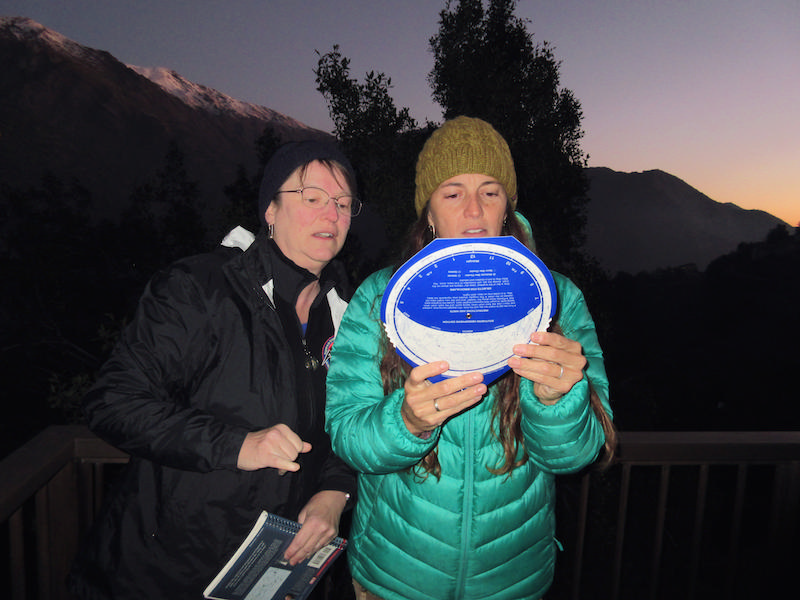 ACEAP ambassadors Alice Few (left) and Amy Jackson seek the advice of a planisphere as they get in a position to view the southern sky for the primary time from the Observatorio Astronómico Andino close to Santiago. Credit score: A. Osterman Meyer (ACEAP/NSF)
ACEAP ambassadors Alice Few (left) and Amy Jackson seek the advice of a planisphere as they get in a position to view the southern sky for the primary time from the Observatorio Astronómico Andino close to Santiago. Credit score: A. Osterman Meyer (ACEAP/NSF)
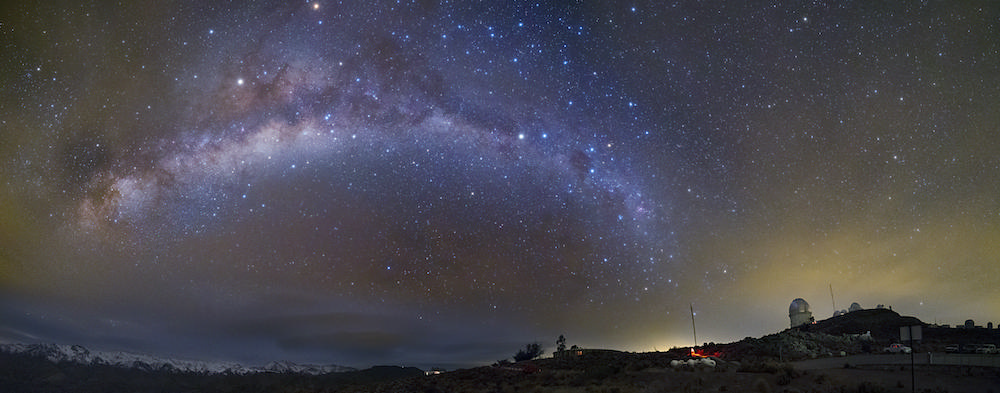 This colourful panoramic view captures a number of of the telescopes and different constructions atop Cerro Tololo on the Cerro Tololo Inter-American Observatory. Credit score: D. Demeter (ACEAP/NSF)
This colourful panoramic view captures a number of of the telescopes and different constructions atop Cerro Tololo on the Cerro Tololo Inter-American Observatory. Credit score: D. Demeter (ACEAP/NSF)
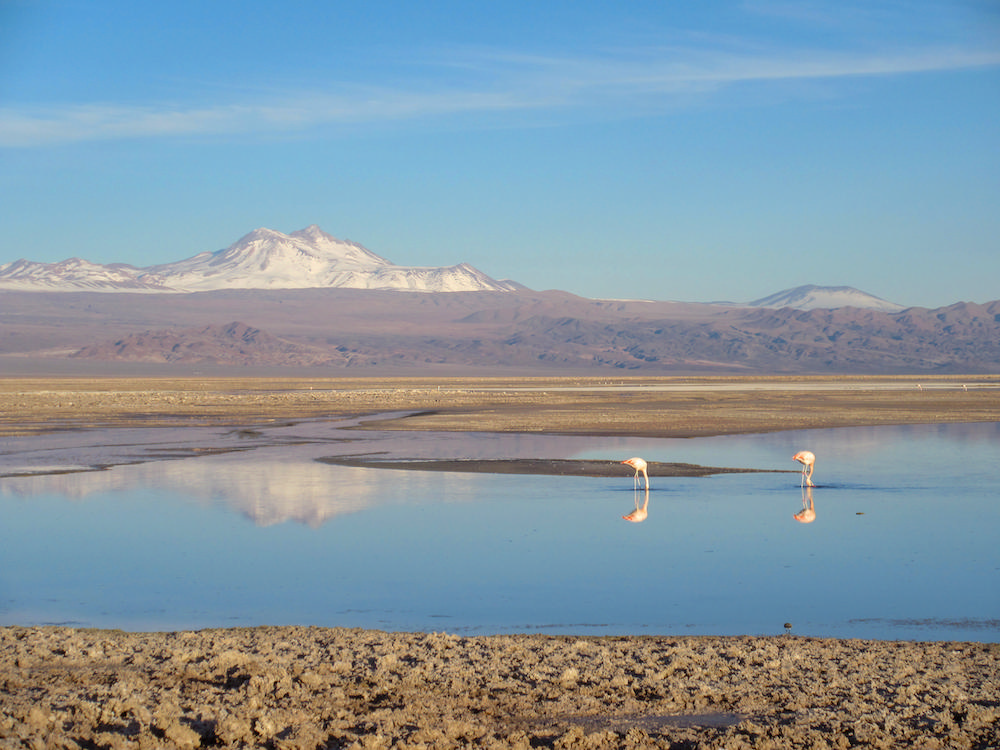 Flamingos seek for a day meal on the Atacama Salt Residences within the Reserva Nacional de Flamencos. Credit score: A. Osterman Meyer (ACEAP/NSF)
Flamingos seek for a day meal on the Atacama Salt Residences within the Reserva Nacional de Flamencos. Credit score: A. Osterman Meyer (ACEAP/NSF)
The go back and forth to Chile is simplest a part of ACEAP. Ambassadors should additionally entire seven outreach tasks related to their revel in that highlights astronomy in Chile. That ultimate day in Santiago, we mentioned outreach targets, some spanning continents to incorporate returning to Chile for long run outreach.
Some of the tasks are public lectures, lecture room actions, blogs and print articles, and planetarium displays. Angela Osterman Meyer is incorporating knowledge from Chilean observatories into highschool science categories in Culver, Indiana. Alice Few of Tacoma, Washington, spoke about ACEAP and STEM on the 2017 Woman Scouts of the united statesA. nationwide conference in Columbus, Ohio. “Additionally,” she says, “it looks like I will be leading a group of Girl Scouts back down to Chile for STEM exploration and the 2019 eclipse! I’ll be working with María Rebeca Lopez [the 2017 Chilean ambassador] on that project so my girls, her students, and the Chilean Girl Guides can have a joint project.”
Jackson became her awe on the sheer measurement of the telescopes right into a scale type of the 8.1m Gemini reflect the use of mylar emergency blankets. “Since most of the people I come in contact with will never get to go to Chile, I hope getting to experience the enormous size of the Gemini mirror will spark some interest. It also serves to discuss the light-gathering power of telescopes and spark interest and questions about research being done in Chile,” she says.
However ACEAP ambassadors aren’t, through nature, happy to forestall as soon as their preliminary outreach tasks are entire. They wish to proceed inspiring passion in astronomy, science, and generation — no longer on my own, however as a part of a bigger, coordinated effort. “We don’t take the trip; the trip takes us,” says Ed Ting, an beginner astronomer and astrophotographer from Manchester, New Hampshire. “I went to Chile hoping to learn about astronomy, telescopes, and to try out some astrophotography techniques. While those things did happen, I also immersed myself in the Chilean culture and made friendships that will last a lifetime.”
Tim Spuck, ACEAP primary investigator and STEM schooling building officer for AUI at NRAO, has now guided 3 teams thru Chile. “For each ambassador, in many ways, ACEAP is its own unique journey,” he says. “I’ve discovered over the years that while there is much in common with the ambassadors, each has a special reason for taking part. This collage of motivations and passion for astronomy results in a unique work of art for each ACEAP cohort. It has been a joy and a privilege to travel this road with each of them.”
The 2018 ambassadors are actually getting ready for his or her go back and forth. The ACEAP circle of relatives grows, and with it the sources for cultivating new alternatives for partnerships throughout the US and Chile. Because of the improve of the NSF, its excellent amenities and their team of workers, and methods like ACEAP, extra of The usa’s astronomy educators and fans are turning into a part of a community devoted to bringing astronomy all the way down to Earth and kindling in other folks world wide a love of the sky all of us percentage.
ACEAP, like astronomy in Chile, is set other folks.
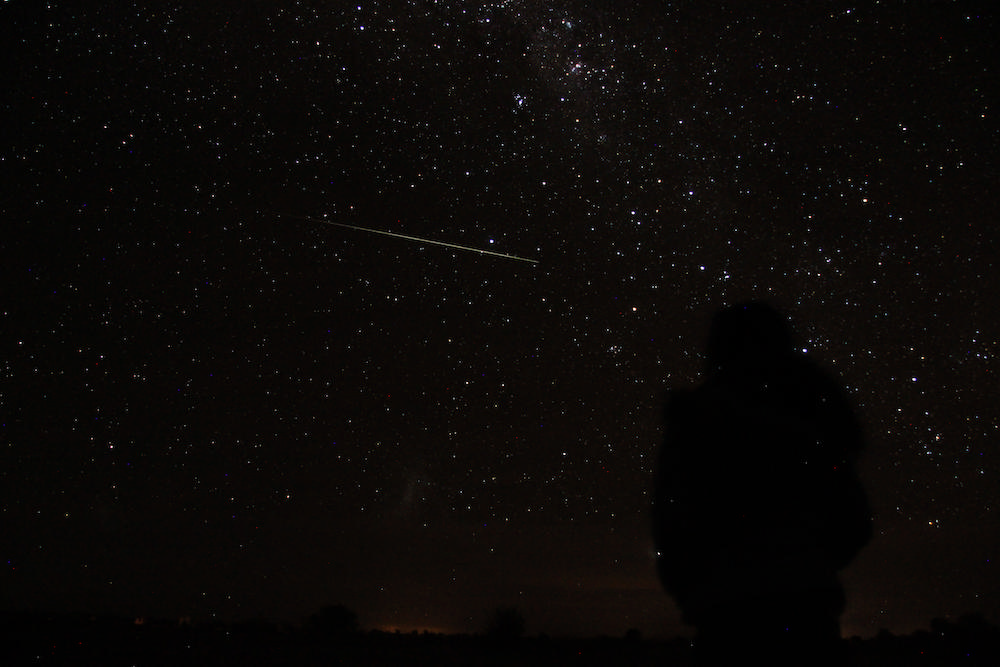 Whilst taking a self-portrait with the Milky Manner and Magellanic Clouds, I serendipitously stuck a capturing superstar. Credit score: Alison Klesman (ACEAP/NSF)
Whilst taking a self-portrait with the Milky Manner and Magellanic Clouds, I serendipitously stuck a capturing superstar. Credit score: Alison Klesman (ACEAP/NSF)
